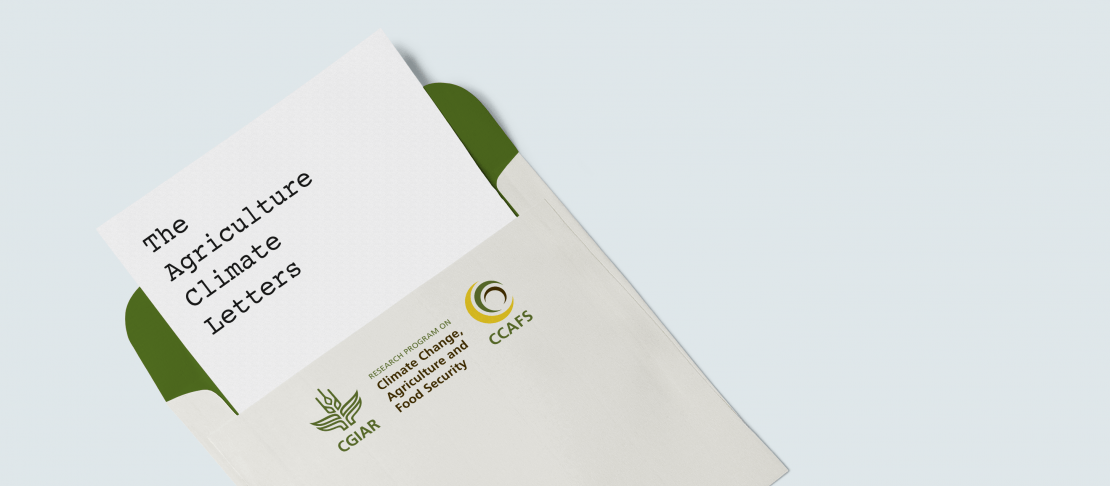举两得 One action, double gains: Is achieving environmental benefits through adaptation or food security interventions feasible?

It has been tricky to bring adaptation and mitigation together in agriculture because there can be serious trade-offs, no better exemplified than in the recent IPCC 1.5° report. It is highly likely that we will overshoot 1.5°C, if not a 2°C, an increase in global temperature. To bring temperatures below these targets, most scenarios suggest the need for bioenergy with carbon capture and storage (BECCS). One scenario calls for 7 million km² of BECCS. The six countries of East African Community only make up 2.5 million km². Thus BECCS at such scale could lead to massive trade-offs between mitigation actions and food security. The IPCC report also acknowledges possible trade-offs related to adaptation actions: if poorly designed they can, for example, increase GHGs and water use, increase social inequality.
But it is not all doom and gloom. Synergies are possible, as these three examples illustrate:
The Ethiopian Productive Safety Net Programme has been implemented at scale in one of Africa’s poorest countries, with positive impacts on food security. Part of the program involves ecosystem-based adaptation—reducing the impact of extreme events by rehabilitating landscapes. A recent analysis by Dominic Woolf and colleagues shows that in the 600,000 ha where the program is being implemented, benefitting over eight million people, the mitigation co-benefits amount to c. 3.4 Tg CO2e yr−1. One action, double gains, as per the Chinese saying.
The second example concerns rice, a staple food for billions. Unfortunately, paddy rice production uses a lot of water and has high emissions, about 70% of the emissions of the aviation industry! Jianling Li and colleagues show how modified fertilizer application and water-saving irrigation techniques such as alternate wetting and drying can reduce net emissions by 20–25%, and yet result in yield increases. The challenge is whether such practices can be applied at scale—invariably dependent on fertilizer and water policies, irrigation infrastructure, and labor implications. Vietnam’s government believes scale is feasible and plans to expand alternate wetting and drying in rice by up to 500,000 ha. Can the rice sector take on the aviation industry in the goal of reducing emissions? We believe it’s possible.
New to AgClim? Approximately every other two months we write a short, pithy letter on recent climate change, agriculture and food security research and what we think it means for today’s world. Each letter will cover a different theme.
Click here to read the original version of this AgClim Letter.
Sign up to receive AgClim Letters e-bulletin and read past editions.
The third example is from the Kenyan dairy sector. Dairy will need to grow in Africa, and so here the key mitigation concept is “reducing emissions intensity”—reducing the emissions per unit of agricultural output. Patric Brandt and colleagues suggest that combining the increased use of the most common improved forage—Napier grass—with dairy concentrates could reduce emissions intensities by about 30%. Other work shows how farmer incomes are increased through improving dairy productivity. Higher incomes and improved fodder also help adaptation—a buffer against risk due to climate-related production failure. John Kashangaki and Polly Ericksen provide the positive business case for a low emissions strategy in the Kenyan dairy sector.
So, given that new options for coping with the climate can lead to trade-offs or synergies, care in understanding these impacts and addressing them is essential. But, the good news is that it is feasible to enhance productivity and/or improve food security, increase adaptive capacity, and on top of that reduce emissions or emissions intensities.
References
- Berhane, G., Gilligan, D. O., Hoddinott, J., Kumar, N., & Taffesse, A. S. (2009). Can Social Protection Work in Africa? Evidence on the Impact of Ethiopia’s Productive Safety Net Programme on Food Security, Assets and Incentives. Economic Development and Cultural Change 63, no. 1 (October 2014): 1-26.
- Brandt, P., Herold, M., & Rufino, M. C. (2018). The contribution of sectoral climate change mitigation options to national targets: A quantitative assessment of dairy production in Kenya. Environmental Research Letters, 13(3), 034016. doi:10.1088/1748-9326/aaac84
- Intergovernmental Panel on Climate Change. (2018). Global Warming of 1.5°C: Summary for Policymakers [PDF].
- Kashangaki, J. & Ericksen, P. 2018. Cost–benefit analysis of fodder production as a low emissions development strategy for the
Kenyan dairy sector. ILRI Project Report. Nairobi, Kenya: ILRI. - Li, J., Li, Y., Wan, Y., Wang, B., Waqas, M. A., Cai, W., . . . Wilkes, A. (2018). Combination of modified nitrogen fertilizers and water saving irrigation can reduce greenhouse gas emissions and increase rice yield. Geoderma, 315, 1-10. doi:10.1016/j.geoderma.2017.11.033
- Tran Van The, Mai Van Trinh, Nguyen Thi Dieu Trinh, Le Hoang Anh, Richards, M., Sebastian, L., & Wollenberg, E. (2018). Developing investment plans for low emission development interventions toward Vietnam's nationally determined Contributions from rice production in the Mekong river delta region, Vietnam [PDF]. CGIAR Research Program on Climate Change, Agriculture and Food Security (CCAFS).
- Odhong, C., Wilkes, A., & Van Dijk, S. (2018). Private-sector led extension in Kenya’s dairy sector: Public private partnerships can play key roles in scaling up low emissions agriculture [PDF]. CGIAR Research Program on Climate Change, Agriculture and Food Security (CCAFS).
- Woolf, D., Solomon, D., & Lehmann, J. (2018). Land restoration in food security programmes: Synergies with climate change mitigation. Climate Policy, 18(10), 1260-1270. doi:10.1080/14693062.2018.1427537
Bruce Campbell is the Program Director of CCAFS. Lini Wollenberg is the Flagship Leader of the Low Emissions Development at CCAFS. Dong Hongmin is Deputy Director General of the Institute for Agriculture, Environment and Sustainable Development (IEDA) at the Chinese Academy of Agricultural Science (CAAS).
